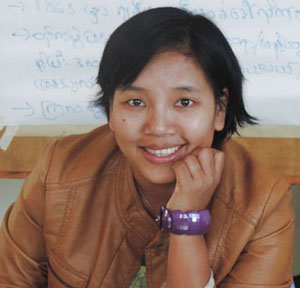Many observers may wonder what goes on within Burma’s three-year-long peace process. Some criticize the government’s army, commonly known as Tatmataw, for its continuous attacks on the bases of ethnic armed groups, while others blame ethnic armed groups for not speeding up the process. Many are frustrated by the lack of public information—the failure to let the public know what goes on. Some doubt the political will of U Thein Sein’s government.
The unprecedented agreement on a draft text for a nationwide ceasefire agreement (NCA) was made on March 31, 2015. Burma observers and people involved in the peace process are excited by this new development. For the President this is a cause for celebration, as it lays the foundation for a continued peace process. However, for the ethic armed groups, this is only the beginning. Their ultimate goal is to achieve a federal state, but consensus must be reached among the ethic armed groups and the leading government. There is still no common understanding and agreement even among the ethnic political parties that are advocating for such a state.
As the government celebrates its achievement on the NCA draft agreement, it seems to me that many Burma observers do not pay attention to the variables that could bring about this agreement. Since Thein Sein took the presidency in March 2011, he announced a presidential plan that included the “peace process” on its agenda. Some still doubt whether that was a sincere remark. However, the ethnic armed groups grabbed the opportunity as they viewed him as a negotiable man.
Fourteen out of 22 ethnic armed groups agreed on bilateral peace deals between 2012 and 2013. Ethnic armed groups soon realized the need to coordinate and collaborate with each other, which brought about the Working Group for Ethnic Coalition (WGEC). This group became instrumental in formulating the roadmap for the peace process, its timeframe, political dialogue and, most importantly, the role of the military.

This was a turning point in the peace process game. The government’s initial plan—including its end goal and its mechanisms for operation and reporting—was not clear. But the ethnic groups’ plan is more consistent.
From the early stages of bilateral ceasefire discussions, the ethnic armed groups insisted that they would play outside the confines of the 2008 Constitution until they achieved their end goals.
In past ceasefire talks, under the leadership of Gen. Khin Nyunt and his predecessor, Burma’s ethnic armed groups were not in a position to create the terms of demand and timeframe. This time, the working group managed to advance the game in terms of timeframe, in terms of demand and even in the interpretation of the terminology used in the draft agreement. This is a major achievement that the citizens of Burma and the international community alike either do not understand or are ignoring.
It was the ethnic armed groups that introduced the concept of political dialogue; it was from their bitter experiences that a ceasefire alone would not be enough. This political dialogue is a space, wherein there will be wider and more inclusive participation. The political dialogue is where tough and complicated political issues can be discussed and resolved.
In the early phases of the peace process, the government’s negotiation team was satisfied with the status quo of accepting or offering business concessions as incentives for agreeing to a ceasefire. The more cautious and sensible Burma observers could see that the government’s roadmap for peace was business as usual. The game changed, however, when government negotiators, led by Minister U Aung Min, agreed to the concept of political dialogue. Burma’s ethnic groups deserve recognition for their consistency and perseverance.
It was the maneuvering of the ethnic groups—both armed groups and political parties—that led the game. The president, it turned out was clever enough to see that and take credit for it. There’s no risk in crediting him for the peace agreement, as this reflects well on Burma’s reform.
For the ethnic groups, however, reaching this agreement is just one step forward out of hundreds. There is still a long way to go toward achieving a federal state, which is the desired outcome of political dialogue. Only if Burma’s major political powers—such as the Tatmadaw and political parties—deeply listen to what the ethnic groups have to say, can we say that the democratic transition has been successful and ensure that there will be no deadly reverse on the path to peace.
















